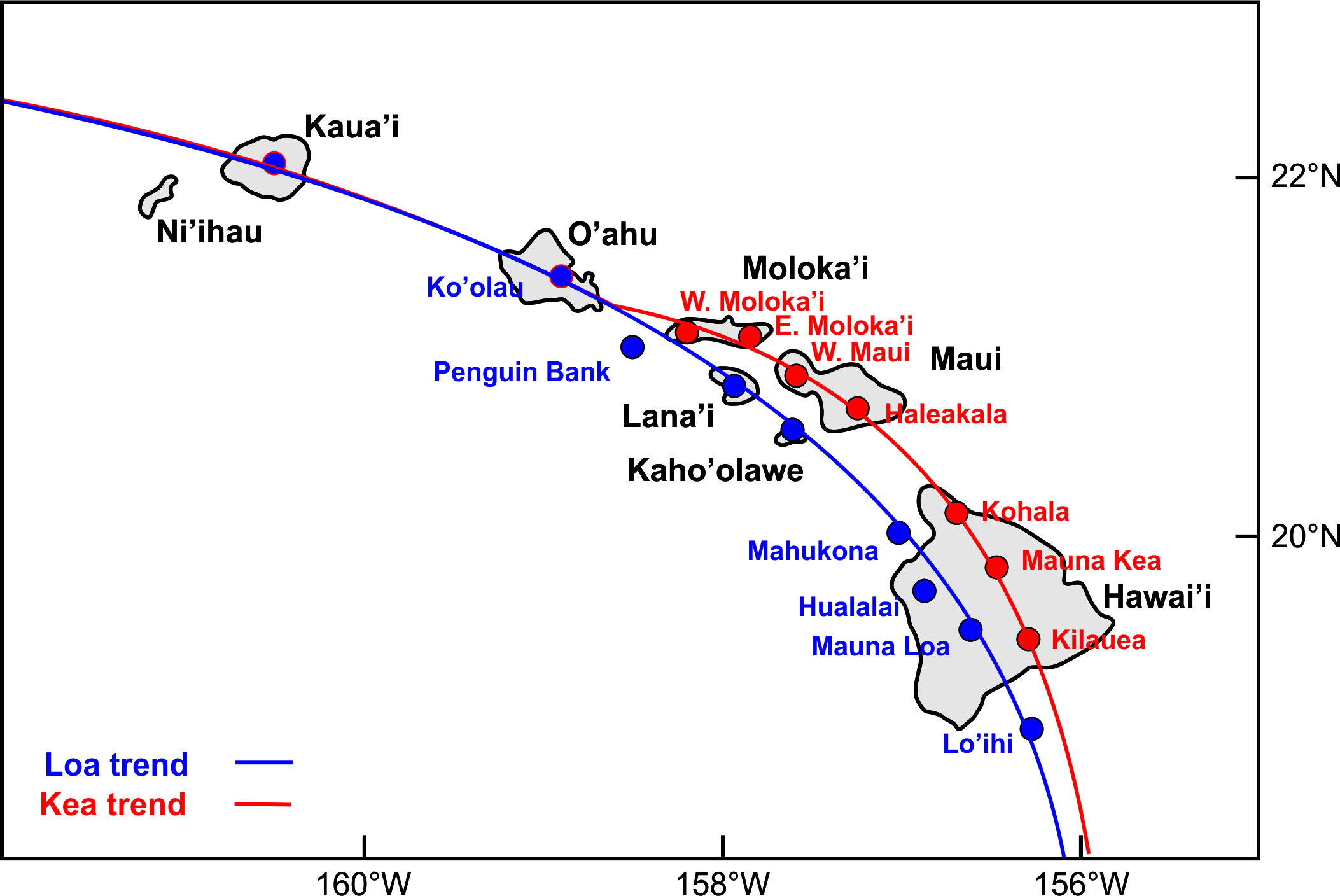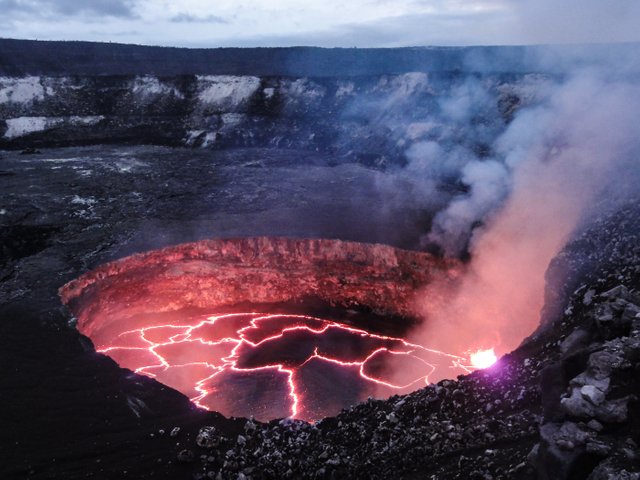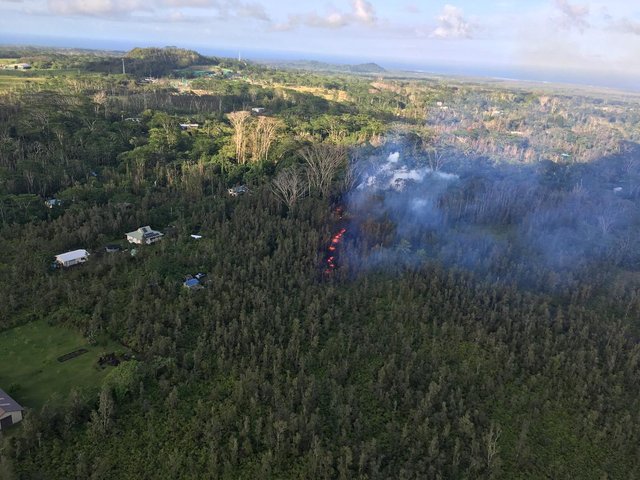Hawaiian volcanoes - Part 14.1: Current eruption of Kīlauea
For the past two days it has been all around the news that parts of Kīlauea, located on the Big Island of Hawai’i, are erupting. It seems that I am not allowed to end my series on Hawaiian volcanoes yet, as Pele demands attention.
What was Kīlauea again?
In case you are not deeply into the material anymore, here a quick summary of the volcano that everyone is talking about.
KĪlauea is the youngest volcano that is currently emerged above the sea surface. The youngest volcano itself is Lō’ihi, but this one is still submerged off the southeastern side of Hawai’i. KĪlauea is located at the southeastern side of the main land Island of Hawai’i. It does not appear as a single shield volcano, but emerges as a bulge on the southeastern flank of Mauna Loa. For that reason, it was for the longest time believed, that KĪlauea is just a satellite of its giant neighbor, and that both volcanoes are fed by the same underlying magma-plumbing system. Modern research has shown that, instead, KĪlauea is fed by its own plumbing system and is representing a separate volcano. On the map below you can see that the line of related volcanoes is currently curved. Also lying on the curve that crosses KĪlauea are Mauna Kea and Kohala, but excludes Mauna Loa. In general it is to Mauna Kea what Lō’ihi is to Mauna Loa.

Map of recent Hawaiian volcanism, highlighting the two volcanic chains.
Modified after Jones et al. (2017).
At first KĪlauea only referred to the summit of the volcano, but over the years its meaning has extended into describing the whole volcano. The crater at the summit is known as Halema’uma’u and it is the current home of the fire goddess Pele. The crater caldera hosts an active lava pond.
Part of the volcano is also the Eastern Rift Zone, hosting the magmatic cone, termed Pu’u ‘Ō’ō. This area has been continuously volcanically active since 1983.
Kīlauea ranks among the world's most active volcanoes and may even top the list.

KĪlauea lava lake.
commons.wikimedia.org
And what is happening right now?
On the afternoon of May 3, 2018 an intrusion of molten rock into the lower East Rift Zone of the KĪlaue Volcano has reached the surface. Eruption took place in parts of Leinai Estates. At first a 150 m long fissure opened and erupted spatter and intermittent bubble bursts for 2 hours. Outpouring lava did not travel far distances from the fissure, a few meters at best.

Fissure 1 opening on May 3rd.
usgs.gov
volcanoes.usgs.gov
The Hawaii County Civil Defense has coordinated a response including evacuation of parts of the affected area. The USGS Hawaiian Volcano Observatory immediately deployed its geologists, who have been monitoring the eruption site over night. Other scientists are continually interpreting the available data from various volcano monitoring techniques.
As of Friday (May 4th) morning, at least three fissures have opened. Ground cracking and strong gas emissions have so far preceded each new outbreak. In all eruptions primary magmatic activity is reduced to spattering lava and flows have remained flowing only a few meters away from the extrusion points. Earthquake activity, accompanying the increased magma movement under the ground as well as the escape of magma to the surface, has remained elevated and dangers through high volcanic gas levels have been reported in proximity to the vents.
Additionally, seismic activity has increased in the last several hours, with the latest earthquake (occurring Friday night) being a M6.9 southwest of the Leilani Estates.

Fissure 3 at Leilani and Kaupili Streets in Leilani Estates subdivision. Note the spattering lava and 2 m thick flows on the road.
volcanoes.usgs.gov
How does all that influence the rest of the volcano?
The tilt of the shield volcano is continuously flattening, which is expected during eruption. In accordance to that the surface of the lava lake on its summit is dropping. Only volcanic gas emissions (mainly sulfur dioxide) stays elevated. If you want to take a look, the USGS has a webcam stationed that continuously looks at the Halemalulu crater. The link is here.
At Pu’u ‘Ō’ō, the volcanic cone in the eastern rift zone of the Kīlauea volcano, no signs of deflation have been measured at the moment and field geologists have not observed any lava activity in the area. That means the previous active 61g lava flow is no longer being fed. In reaction to earthquakes, small ash emissions are observed.

Ash plume rising from Pu’u ‘Ō’ō after a M5.0 earthquake.
volcanoes.usgs.ov
Concluding remarks
Things are crazy at them moment and I hope that everyone currently on that island is safe and will stay safe during whatever is to come. I will follow the updates from the USGS to stay informed. I beg that Pele is merciful.
I want to thank @gra, who made me aware of the issue at hand and motivated me to spend some time to read up on it appropriately.
Previous Posts
Hawaiian volcanoes - Part 1: Introduction
Hawaiian volcanoes - Part 2: The Hawaiian Hotspot
Hawaiian volcanoes - Part 3: A growing volcano
Hawaiian volcanoes - Part 4: The Rejuvenation Stage
Hawaiian volcanoes - Part 5: Evolution to Atolls and Seamounts
Hawaiian volcanoes - Part 6: Mythology vs Geology
Hawaiian volcanoes - Part 7: Recent eruptions
Hawaiian volcanoes - Part 8: Volcano Monitoring
Hawaiian volcanoes - Part 9: Predicting Eruptions
Hawaiian volcanoes - Part 10: Volcanic Air Pollution
Hawaiian volcanoes - Part 11: Volcanoes falling apart… from Landslides and Tsunamis
Hawaiian volcanoes - Part 12: Benefits of Volcanoes
Hawaiian volcanoes - Part 13: The Double Volcano Chain

Thank you for the detailed information! I had been curious about what was going on and you answered my questions.
You received a 80.0% upvote since you are a member of geopolis and wrote in the category of "geopolis".
To read more about us and what we do, click here.
https://steemit.com/geopolis/@geopolis/geopolis-the-community-for-global-sciences-update-4